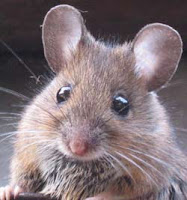Two quick stories on immunosuppression
Welcome back,
I haven't blogged for last 2 weeks for personal reasons. I have been thinking on what should i write on. For a moment i was thinking of how microbiology has come up in past decade. We no more speak about microbiology as a subject. It has specialized and super specialized. And these new branches are evolving into science in itself. We are talking about new emerging frontiers such as Microbial forensics, Microbial endocrinology, Microbial metabolomics and blah blah. Probably we this age of recombination. Take every field known to science and combine with microbiology. And that is seriously expected to work. Reason, everything has a connection with Microbes.
So did i forget anything? Not at all. In the news section of science as a whole, I have probably the biggest news maker in the last 2 weeks. That was the mathematical equation, a unified theory of dark matter and dark energy that alters Einstein's equations describing the fundamentals of gravity. Well, i don't understand it enough to give you an explanation. (I will probably, if model will come up with a microbiology component). If you are interested however, visit this link
Nature Journal is a pay wall journal. But then they occasionally come up with a paper that is open access. When they do, it means they have something that is too important and must be shared to the world. But what if i tell you that they have made available a huge list of knowledge on ENCODE (Encyclopedia of DNA Elements) project totally free of charge. You must check it out here.
 |
| Photo 1: Mice (Source) |
I have 2 questions for you. 1st what if you cannot smell? 2nd, Is gene therapy feasible or practical (What an unrelated question!!!). Well, then let me combine the 2. Can gene therapy correct genetic olfactory disability (The combining of questions isn't looking right, but will do for know). As a proof of concept, it is possible. Jeffrey Martens team has did it. They have been able to correct a mice with olfactory defects and restored their sense. “I would like to see this move towards correcting blindness or kidney dysfunction,” Martens says. The story is here. This leads me to an idea. Next time someone you see someone who has lost his sense send him to this lab for a correction.....!!!! And by the way if you want to know how the mouse smells check the source link in photo to right.
 |
| Fig 1: Interferon gamma (Source) |
When we study virology, the first thing that we learn is about the cellular defenses to these intracellular pathogens. Interferon-γ is probably a important player. And there exists a rare condition where people evolve autoimmunity to the Interferon-γ (I can call it immunity against immunity). And what does the disease look like? If immunity is attacked it causes immune suppression. Thats the theme of the story published in NEJM (Link). The researchers found that nearly 88% of the people who had opportunistic infection resembling as that of in AIDS, had an auto antibody. The study was done in Thailand and Taiwan. So now that means to me that all those people who have opportunistic infections which otherwise is considered as hallmark of HIV is not actually so. And when the authors say 88% (of 203 subjects), i guess its not so rare after all. "These findings provide new opportunities to understand the relationship between immunodeficiency and autoimmune diseases, the topic of a recent AARDA-sponsored international symposium," says Dr. Noel Rose (Source). As i say this, I remember a compound Fontolizumab that has anti-interferon-γ antibody property. Just saying!!
Ah so what was i talking about? Oh yes, Immunosuppression. And thats exactly the topic for short discussion today. The paper that am focussing here is titled "Single mutations in the transmembrane envelope protein abrogate the immunosuppressive property of HIV-1" by Morozov etal. I have written previously quite a few blogs about HIV previously. In case you haven't read them yet just check them out. And i also recommend you have a look at my presentation on HIV life cycle.
There has been multiple theories on how HIV actually achieves immunosuppression. The first well known version is that IL-4 can be up-regulated by the HIV tat protein. IL-4 has known immunosuppressive activity (Source). Another famous theory is the play by Nef protein and IL-10 which can modulate the CD14 expression (Source). A more known theory is that HIV binds to CD4+ CD25+ regulatory T cells that can control the immunity. And of course there are many more theories such as this, where different proteins of HIV are implicated in various situation.
Previously a work done by Tomer Cohen etal (Link) showed that there is a striking similarity between HIV gp41 transmembrane domain and transmembrane domain of the α-subunit of the T-cell receptor. The similarity was nailed down to 9 amino acids.
 |
| Fig 2: Interactions of gp41 (Source) |
It was then realized that all the retroviral transmembrane region had a special sequence referred as isu (immunosuppressive) domain. They inhibit mitogen-triggered proliferation of peripheral blood mononuclear cells and hence cause immunosuppression. So there is something in the gp41 that really has a isu effect. So an elaborate study on this protein was done. The finding was that gp41 was a very good modulator of cytokine expression. Altering the isu domain at 6 critical sites had serious impact on the viral capacity to modulate immune response. But the authors clearly mention that the this is not the sole reason. They postulate that the interaction of gp120, Tat and Nef along with the isu could explain immunosuppression.
Further Reading:





Comments
Post a Comment